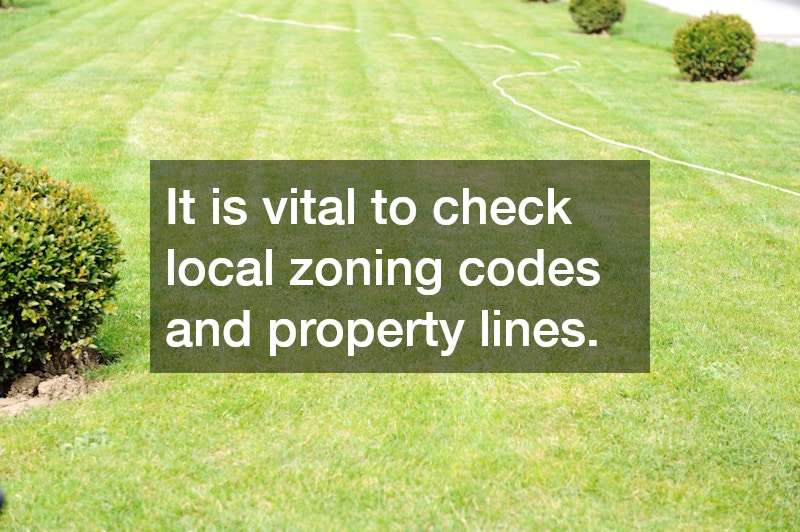
Chain link fences are a popular choice among homeowners due to their durability and affordability. These fences are constructed from interwoven steel wires forming a diamond pattern, providing security without obstructing visibility. They come in various heights and coatings, offering flexibility to suit residential, commercial, or industrial needs.
Understanding the basic structure and benefits of chain link fences will aid in planning and executing a successful installation. As you embark on this project, familiarize yourself with the types of materials available to ensure you select the right fit for your needs.
Among the commonly used materials for chain link fences are galvanized steel and vinyl-coated varieties. Galvanized steel offers excellent rust resistance, making it an ideal choice for areas prone to moisture. On the other hand, vinyl coatings add an extra layer of protection and are available in multiple colors, enhancing aesthetic appeal. While chain link fences are known for their durability, the conditions of your local environment may influence the best choice of material. Whether you’re installing these fences to secure a backyard, enclose a pet area, or designate boundaries, selecting the right materials is crucial for long-term performance.
Before beginning the installation process, it is vital to check local zoning codes and property lines. These regulations ensure that your fence complies with community standards and avoids potential disputes with neighbors. It’s advisable to contact the local utility company to identify underground cables or pipes to prevent any damage during post placement. After confirming legal considerations, gather the required materials and tools, including fence fabric, posts, gates, tension wires, and necessary hardware. Proper preparation is the key to a smooth and successful installation process, laying the groundwork for the following construction steps.
Preparing the Installation Site
Accurate measurement of the installation site is essential for the effective installation of chain link fences. Start by marking the corners and stakes where the fence sections will connect, ensuring that your measurements correspond with the layout on paper. This step is vital for estimating the total length of the fence and determining the number of posts and panels needed. Having clear boundaries and measurements will not only influence the purchase of materials but also guide the entire installation process. Precise site preparation serves as a foundation for the durability and structural integrity of the fence.
Clear the designated area of any debris, plants, or existing structures that may impede the installation of the fence. Smoothing the ground surface will facilitate easier post placement and ensure that the fencing is installed uniformly. When preparing the ground, it may also be necessary to consider drainage to prevent water accumulation, which could undermine the stability of the fence posts. Ensuring that the area is free of obstacles and well-leveled will contribute significantly to the ease and accuracy of the installation. Proper site preparation can save significant time and effort during the installation process, making adjustments and corrections less likely.
Installing the Fence Posts
Setting the fence posts is a pivotal step in the installation of chain link fences, as it provides structural support to the entire system. Begin by digging holes at the marked post locations, ensuring they are deep enough to provide stability—typically one-third of the post length. Use a level to confirm that each post is perfectly vertical before securing it with concrete. It’s advisable to let the concrete cure overnight to ensure maximum stability, ensuring that the posts will not shift or lean over time. Proper post installation is key to the fence’s resilience against external pressures such as wind and impact.
Spacing between fence posts is crucial for the uniformity and strength of chain link fences. Posts should generally be spaced 4 to 10 feet apart, depending on wind load and fence height. Consistent spacing ensures that tension is evenly distributed along the fence line, reducing the risk of sagging or collapse. Precise alignment is especially important in maintaining tautness and aesthetics once the fence fabric is attached. Ensuring correct post spacing will not only enhance the structural integrity but also beautify the completed project.
Attaching the Chain Link Fabric
With the posts securely in place, the next step is to unroll and attach the chain link fabric to the fence framework. Begin by securing one end of the fabric to a post with tension bars and bands, ensuring it remains upright and aligned. This process requires using tie wires to affix the fabric to line posts while maintaining even tension throughout the installation. Utilizing a come-along and stretcher bars can assist in achieving the necessary tautness, enhancing the fence’s durability. Proper attachment is essential for the structural integrity and aesthetic appeal of the chain link fence.
Splices may be necessary if the length of the fence exceeds the available fabric roll. To splice, weave a new joiner wire through the ends of the adjacent sections, securely linking them to form a continuous panel. Pay attention to any areas of overlap and ensure that all connections are tight to prevent movement or gaps in the fence. Securely attached splices contribute to a seamless appearance and reinforce the overall stability of the fence line. This step is critical for ensuring consistent tension and a smooth finish along the entire length of the fence.





